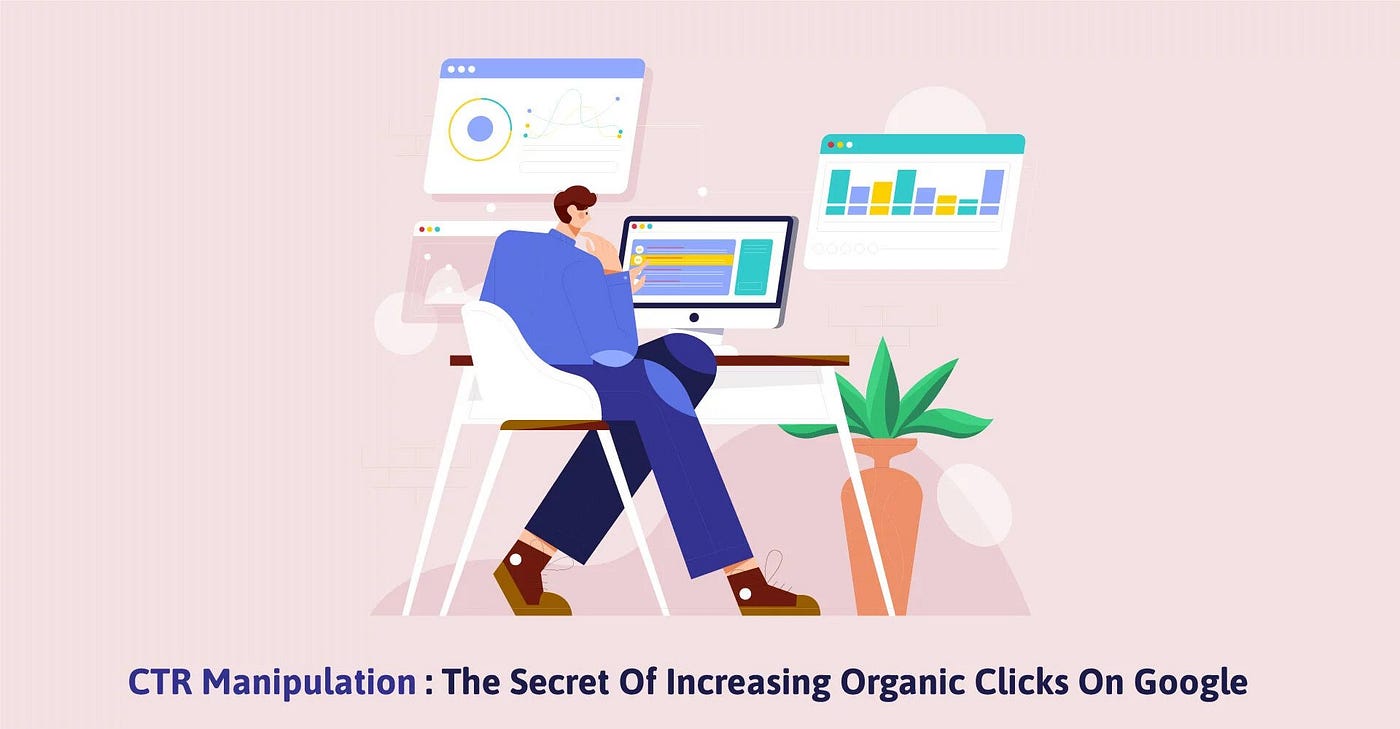CTR Manipulation Press Release-- Announcing New Techniques for CTR Optimization
CTR Manipulation Press Release-- Announcing New Techniques for CTR Optimization
Blog Article
CTR Adjustment: A Game Changer for Digital Projects
The increase of CTR control has undeniably changed electronic marketing techniques, giving marketing professionals with devices to enhance involvement and drive website traffic efficiently. Techniques such as A/B testing and tailored content have actually proven to yield significant renovations in click-through rates. As brands progressively utilize these techniques, the honest implications of such methods require analysis. Stabilizing the quest of enhanced metrics with the demand for genuine target market connections poses a crucial challenge for online marketers today. What effects might this stabilizing act hold for the future of digital campaigns?
Recognizing CTR Manipulation
Although click-through rate (CTR) control may seem like a simple technique in digital marketing, it includes a variety of strategies intended at synthetically inflating engagement metrics. This manipulation can take various types, including using click farms, bots, or misleading ad placements that misinform consumers right into clicking. These approaches can compromise the stability of performance information, making it challenging for online marketers to gauge the authentic effectiveness of their projects.
Furthermore, CTR control increases moral problems, as it undermines the transparency of electronic marketing. The dependence on filled with air metrics can lead to misdirected marketing choices, skewing resource allotment and project techniques. Subsequently, services might invest heavily in channels and techniques that show up successful but do not generate genuine interaction or conversions.

Advantages of Click-Through Rate Optimization
Maximizing click-through rate (CTR) is essential for improving the performance of digital advertising and marketing campaigns. A higher CTR shows that a bigger proportion of individuals are involving with the web content, which can lead to enhanced site web traffic and much better conversion prices. By boosting CTR, brands can properly allocate their marketing resources to efforts that generate the greatest returns.
One of the key advantages of CTR optimization is the capacity for enhanced ad positioning and reduced costs - CTR Manipulation. Systems like Google Advertisements compensate higher CTRs with better ad positioning and reduced cost-per-click (CPC), allowing marketing experts to stretch their budgets further. Furthermore, a well-optimized CTR can enhance brand exposure, as greater interaction rates usually correlate with increased natural reach

Techniques for Effective CTR Control
To properly manipulate click-through rates (CTR), marketing experts can use a range of critical methods that improve user engagement and drive traffic. my link One essential technique is maximizing advertisement copy to develop engaging and action-oriented language. CTR Manipulation. Using strong call-to-action (CTA) phrases urges individuals to take immediate action, increasing the chance of clicks
One more effective technique is A/B screening, which enables marketers to contrast different ad variants. By methodically evaluating efficiency metrics, they can determine which elements reverberate finest with the target audience, thus refining their approaches for maximum influence. Additionally, leveraging visually attractive graphics and concise messaging can record focus swiftly, making it much more possible that individuals will engage.

Finally, optimizing landing web pages to make certain a seamless user experience can minimize bounce rates and encourage more communication, eventually fostering higher CTR. By incorporating these techniques, marketing professionals can efficiently manipulate CTR to achieve their project objectives.
Measuring Success in Digital Projects
Gauging success in digital campaigns needs a clear understanding of vital performance signs (KPIs) that line up with project purposes. KPIs work as measurable metrics that aid analyze the effectiveness of numerous techniques employed throughout the campaign. Usual KPIs consist of click-through rates (CTR), conversion rates, expense per purchase (CERTIFIED PUBLIC ACCOUNTANT), and return on financial investment (ROI)
To effectively determine success, it is critical to establish specific, measurable objectives first of the project. If the main objective is to enhance brand recognition, metrics such as impressions and engagement prices may be focused on. On the other hand, projects concentrated on straight sales would gain from an extra thorough analysis of conversion prices and revenue generated.
Routine analysis of these KPIs makes it possible for marketers to make data-driven decisions, maximizing their strategies in real-time. Making use of analytical tools can assist in monitoring performance and recognizing fads, permitting quick changes to enhance campaign outcomes. Ultimately, a detailed technique to determining success not only highlights areas for renovation however additionally enhances the total efficiency of digital marketing initiatives, driving sustained growth and engagement in the long term.
Future Fads in Digital Advertising And Marketing
Expecting the future of digital advertising and marketing exposes a landscape shaped by fast technological developments and transforming consumer actions. As artificial intelligence and artificial intelligence proceed to evolve, marketers will significantly utilize these modern technologies to individualize projects at an unprecedented scale. view Anticipating analytics will certainly make it possible for brands to anticipate consumer needs, optimizing advertisement positionings and content delivery in real time.
In addition, the surge of voice search and smart tools is changing just how customers interact with electronic web content. Marketing experts will certainly need to adjust their strategies to ensure presence throughout multiple systems, including voice-activated aides. This change requires a focus on conversational advertising and marketing, stressing involvement with discussion instead than typical promotional methods.
Furthermore, privacy worries are prompting changes in data collection practices. Openness and ethical data usage will end up being extremely important, driving brands to promote trust and commitment among consumers. The ongoing development of social networks platforms will certainly additionally influence marketing strategies, with an enhanced focus on authenticity and user-generated web content.
Conclusion
In summary, CTR control represents a substantial advancement in electronic advertising strategies, supplying immediate advantages via enhanced engagement metrics. The moral considerations surrounding such techniques necessitate a cautious strategy to ensure lasting brand honesty and authentic audience link. By striking an equilibrium between optimization techniques and genuine interaction, marketers can cultivate lasting connections with consumers. The ongoing development of digital advertising and marketing will certainly depend on this fragile interplay, shaping the future landscape of brand-consumer interactions.
Report this page